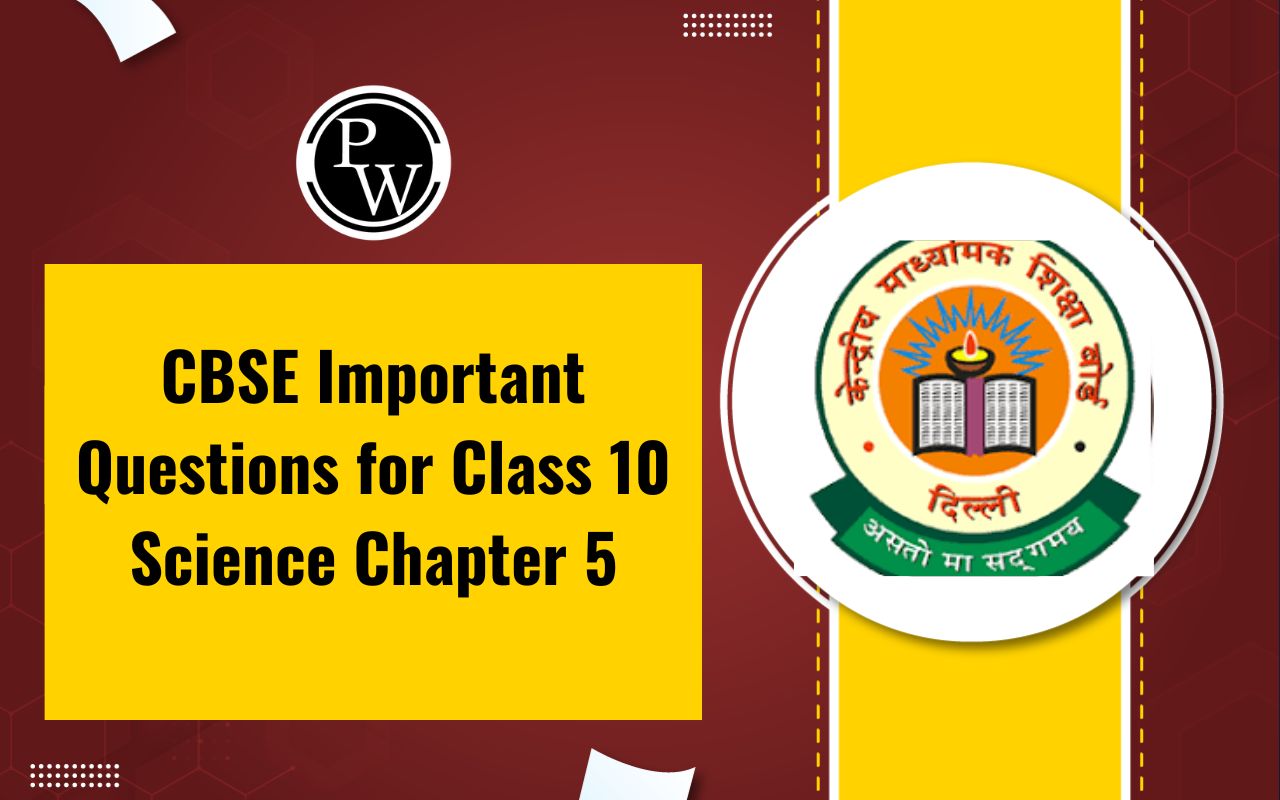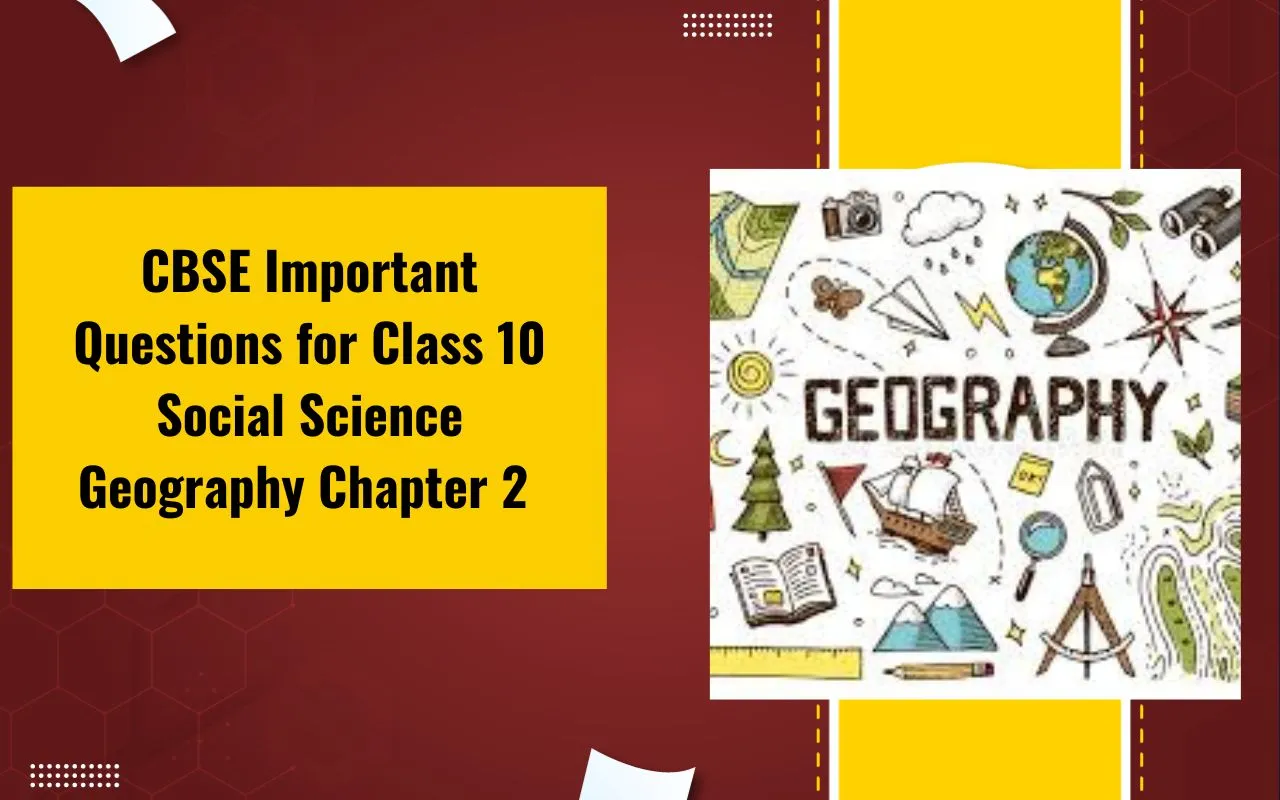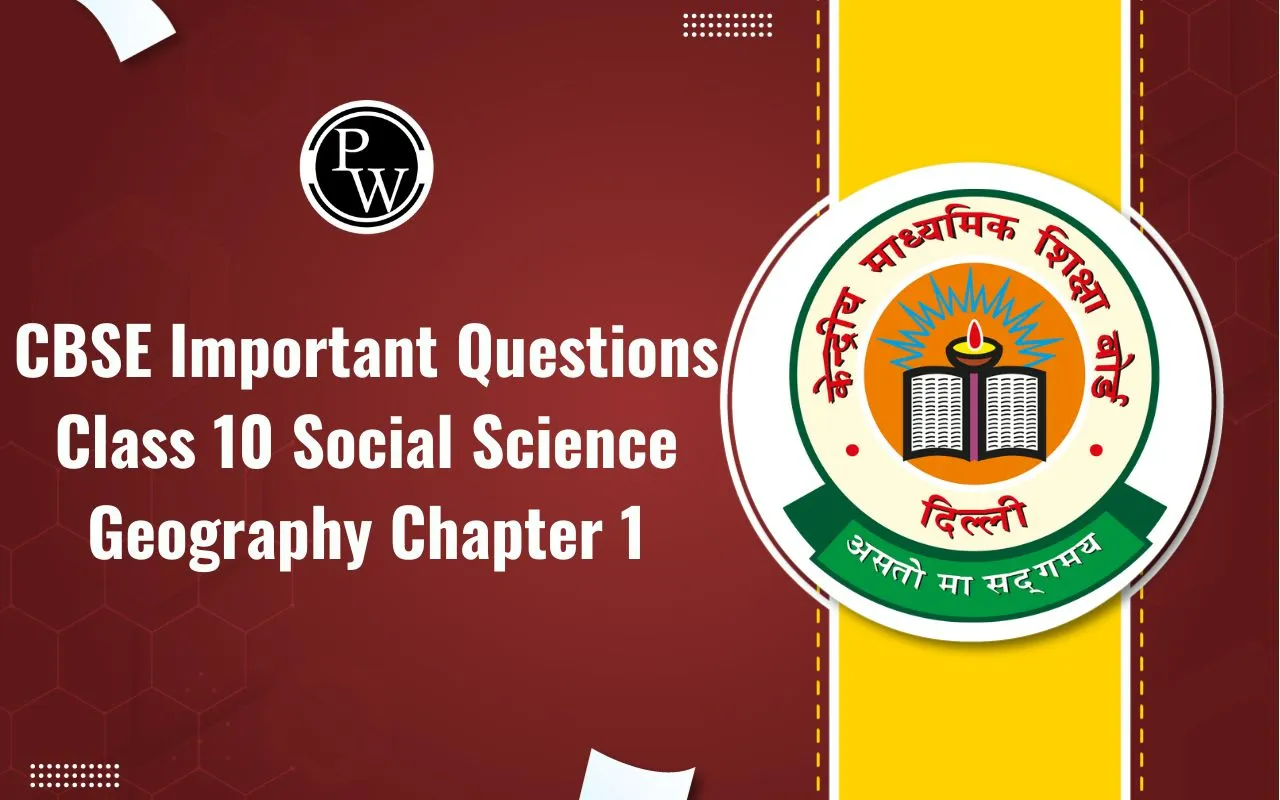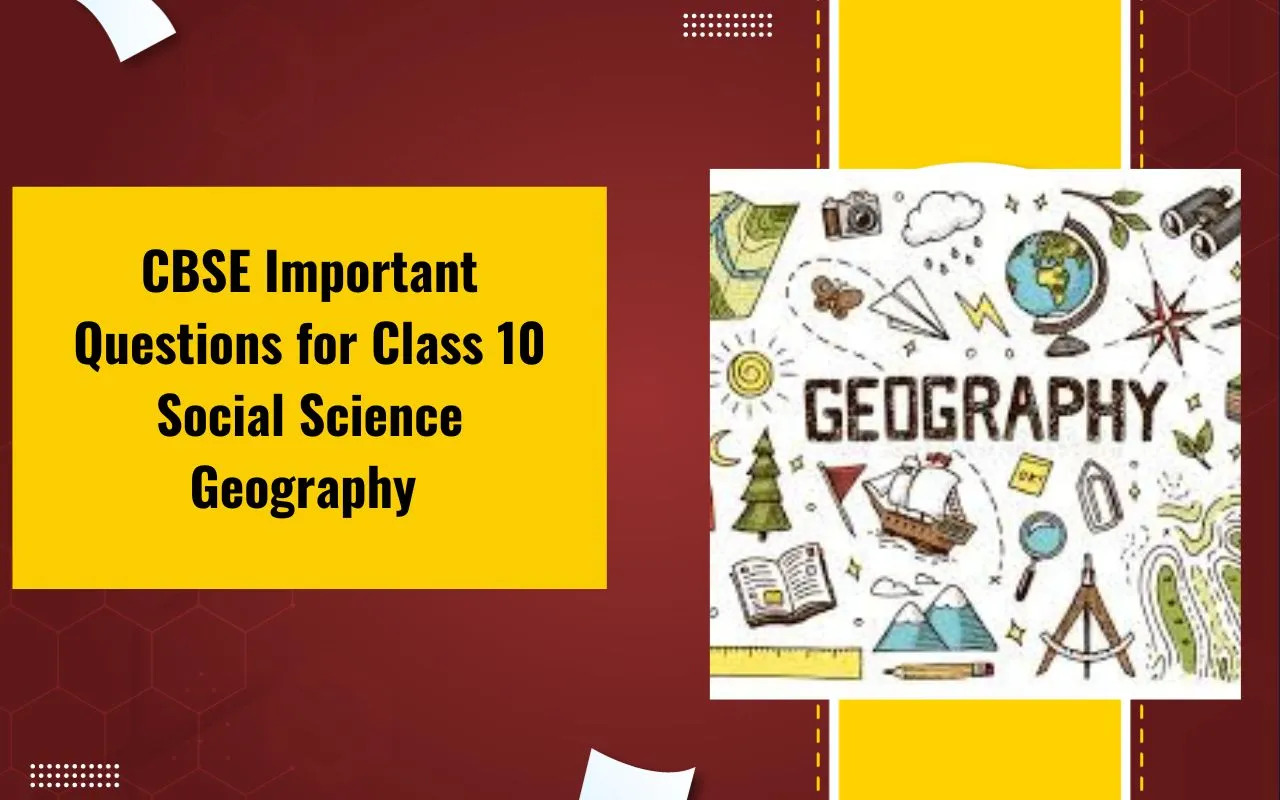
CBSE Important Questions for Class 10 Social Science History Chapter 1: The Rise of Nationalism in Europe is the first chapter of Social Science under the CBSE curriculum for Class 10. This chapter aims to familiarize students about the meaning of nationalism and its development in the entire continent.
With the inception of the French Revolution nationalism spread across the entire Europe and later on paved the way for the development of modern democratic nations across the world.
The chapter typically covers a weightage of 6 to 8 marks for the Class 10th board examination. To aid the preparation of students, we have compiled the most important questions with answers in this article.
CBSE Important Questions for Class 10 Social Science History Chapter 1 Introduction
The emergence of nationalism in Europe during the 18th and 19th centuries marked a significant transformation in the political landscape of the continent fostering a sense of shared identity and self-governance.
The major causes for the rise in nationalism were the French Revolutions and Napoleonic Wars, Cultural and Economic Factors and reactions against Monarchies.
Students must have a thorough knowledge of this chapter to excel in their board exam preparation and boost their general knowledge about world history.
In order to cover this chapter, candidates must focus on key areas from which the questions may frequently arise in the examination. Covering this chapter is vital for securing the highest marks in the examination.
CBSE Important Questions for Class 10 Social Science History Chapter 1 - The Rise of Nationalism in Europe PDF
The CBSE Important Questions for Class 10 Social Science History Chapter 1 PDF consists of an array of questions to boost the preparation of students. The PDF covers questions from all the topics included under the syllabus in accordance with their marks allocation.
The Rise of Nationalism in Europe is an important chapter for the examination that assesses the candidate's understanding about the inception of nationalism, causes and its political impact. Candidates can download a copy of the detailed PDF summarizing the key questions for effective preparation.
CBSE Important Questions for Class 10 Social Science History Chapter 1 PDF
CBSE Important Questions for Class 10 Social Science History Chapter 1 with Answers
Section A
1. For the middle class of Europe, the most important feature of Liberalism was
(A) abolition of conservatism.
(B) Right to be liberal and educated.
(C) Individual freedom and equality before the law
(D) Representative government.
Ans. (C) Individual freedom and equality before the law
2. The Ottoman Empire was ruled by the emperor of
(A) Turkey
(B) Russia
(C) Britain
(D) Prussia
Ans. (A) Turkey
3. Which one of the following group of countries collectively defeated Napoleon in 1815?
(A) Britain, Russia, Prussia and Austria
(B) Britain, Russia, Prussia and Australia
(C) Britain, Russia, Netherlands and Germany
(D) Britain, Luxembourg, Germany and Italy
Ans: (A) Britain, Russia, Prussia and Austria
4. Assertion (A): After the Russian occupation of Poland, the Russian language was imposed on its people.
Reason (R): The use of Polish soon came to be a symbol of struggle against Russian dominance.
(A) Both A and R are correct, and R is the correct explanation of the A.
(B) Both A and R are correct, but R is not the correct explanation of A.
(C) A is correct, but R is incorrect.
(D) A is incorrect, but R is correct.
Ans: (B) Both A and R are correct, but R is not the correct explanation of A.
5. Read the facts regarding the Revolution of the Liberals in Europe during 1848 and choose the correct option:
I. Abdication of the monarch
II. Universal male suffrage had been proclaimed
III. Political Rights for women were given
IV. Freedom of the press had been asked for
(A) Only I and II are correct.
(B) Only I, II and III are correct.
(C) Only I and IV are correct.
(D) only I, II and IV are correct.
Ans: (A) Only I and II are correct.
6. What was the major change that occurred in the political and constitutional scenario due to the French Revolution in Europe?
Sol. It led to the transfer of sovereignty from the monarchy to a body of French citizens. The revolution proclaimed that it was the people who would henceforth constitute the nation and shape its destiny.
7. Name the Treaty of 1832 that recognised Greece as an independent nation.
Sol. Treaty of 1832: Constantinople
8. Who remarked, “When France sneezes the rest of Europe catches a cold”.
Sol. Duke Metternich
9. Who was proclaimed German Emperor in a ceremony held at Versailles in January 1871?
Sol. Kaiser William I of Prussia was proclaimed German Emperor in a ceremony held at Versailles in January 1871
10. Examine the significance of the Statue of Liberty in Frederic Sorrieu's paintings, ‘The Dream of Worldwide Democratic and Social Republics'.
Sol. The Statue of Liberty is personified as women bearing the Torch of Enlightenment in one hand and the Charter of the Rights in the other.
Section B
11. Who founded the secret society, 'Young Italy' during the 1830s?
Sol. During the 1830s, Giuseppe Mazzini had sought to put together a coherent program for a unitary Italian Republic. He formed a secret society called Young Italy.
12. Why did big European powers meet in Berlin in 1885?
Sol. The big European powers met in Berlin in 1885 to divide Africa among themselves. They wanted to divide Africa to gain control over the continent's natural resources for the development of their industries.
13. Name the ‘Act’ which resulted in the formation of the ‘United Kingdom of Great Britain’.
Sol. The Acts of Union, passed by the English and Scottish Parliaments in 1707, led to the creation of a United Kingdom to be called “Great Britain” on 1 May of that year. The UK Parliament met for the first time in October 1707.
14. Name the customs union formed at the initiative of Prussia in 1834.
Sol. Zollverein, a German customs union established in 1834 under Prussian leadership. It created a free- trade area throughout much of Germany and is often seen as an important step in German reunification.
15. What was the strong demand for the emerging middle classes in Europe during the nineteenth century?
Sol. The strong demand for emerging middle classes in Europe was the freedom of markets and the abolition of state-imposed restrictions on the movement of goods and capital.
Section C
16. How did the Polish use their language as a weapon of national resistance against Russia?
Sol. The Polish language was used for church gatherings and all religious instructions. As a result, a large number of priests and bishops were put in jail or sent to Siberia by Russian authorities as punishment for their refusal to preach in
Russian. The use of Polish came to be seen as a symbol of the struggle against Russian dominance.
17. How was France responsible for spreading nationalism to other parts of Europe?
Sol. Students and other members of educated middle classes began setting up Jacobin clubs like in France, and in European countries. Their activities and campaigns prepared the way for French armies which moved into Holland, Switzerland, Belgium and much of Italy in the 1970s. With the outbreak of the revolutionary wars, the French armies began to carry the idea of nationalism abroad.
18. “The development of nationalism did not come about only through wars and territorial expansion. Culture played an important role in creating the idea of the nation.” Elaborate upon the statement.
Sol. Romantic artists and poets created a sense of shared collective heritage, a common cultural past, as the basis of a nation. It was through folk songs, folk poetry, and folk dances that the true spirit of the nation was popularised. Emphasis was given to the vernacular language and the collection of folklore, to carry the modern nationalist message to large audiences.
19. What conditions prevailed in 1848 France?
Sol. (i) The year 1848 was the year of food shortages and widespread unemployment. It brought the population of Paris on the roads.
(ii) Barricades were erected and Louis Phillippe was forced to flee.
(iii) A National Assembly proclaimed a Republic, granted suffrage to all adult males above the age of 21 and guaranteed the right to work. National workshops to provide employment were also set up.
Section D
20. “The decade of 1830 had brought great economic hardship in Europe”. Support the statement with arguments.
Sol. (i) There was an enormous increase in population all over Europe. In most countries, there were more seekers of jobs than employment.
(ii) Population from rural areas migrated to the cities to live in overcrowded slums.
(iii) Small producers in towns were often faced with stiff competition from imports of cheap machine-made goods from England.
(iv) In those regions of Europe where the aristocracy still enjoyed power, peasants struggled under the burden of feudal dues and obligations.
(v) The rise of food prices or a year of bad harvest led to widespread pauperism in town and country.
21. How had the female figures become an allegory of the nation during the nineteenth century in Europe? Analyze.
Sol. The female figures as an allegory of the nation:
(a) Artists found a way to represent a country in the form of a person.
(b) Then nations were portrayed as female figures.
(c) The female figure was chosen to personify the nation. It did not stand for any particular woman in real life.
(d) It gave the abstract idea of the nation a concrete form.
(e) Thus, the female figure became an allegory of the nation.
(f) During the French Revolution, artists used the female allegory to portray ideas such as Liberty, Justice and the Republic.
22. Describe the main clauses of the Treaty of Vienna of 1815.
Sol. The main clauses of the Treaty of Vienna signed in 1815 were: Vienna Congress: The Congress was hosted by the Austrian Chancellor “Duke Metternich”.
(a) The Bourbon dynasty which had been deposed during the French Revolution was restored to power.
(b) France lost the territories it had annexed under Napoleon.
(c) A series of states were set up on the boundaries of France to prevent French extension in future.
(d) Kingdom of the Netherlands including Belgium was set up.
(e) Prussia was given important new territories on its western frontiers.
Section E
23. Read the source given below and answer the questions that follow:
Frederic Sorrieu prepared a series of four prints visualizing his dream of a world made up of ‘democratic and social Republics’, as he called them.
The first print of the series shows the peoples of Europe and America – men and women of all ages and social classes – marching in a long train, and offering homage to the Statue of Liberty as they pass by it. Artists of the time of the French Revolution personified Liberty as a female figure. She bears the torch of Enlightenment in one hand and the Charter of the Rights of Man in the other.
On the earth in the foreground of the image lie the shattered remains of the symbols of absolutist institutions. In Sorrieu’s utopian vision, the peoples of the world are grouped as distinct nations, identified through their flags and national costume.
Leading the procession, way past the Statue of Liberty, are the United States and Switzerland, which by this time were already nation-states. France, identifiable by the revolutionary tricolour, has just reached the statue. She is followed by the peoples of Germany, bearing the black, red and gold flag.
Answer the following MCQs by choosing the most appropriate option:
(i) Who was Frederic Sorrieu?
(A) French artist
(B) German Artist
(C) Italian Artist
(D) British Artist
Ans. (A) French artist
(ii) In which year did Frederic Sorrier prepare a series of four prints?
(A) 1845
(B) 1843
(C) 1848
(D) 1841
Ans. (C) 1848
(iii) Which of the following statements correctly describes “absolutist”?
(A) Monarchical Government
(B) Democratic Government
(C) Decentralised Government
(D) Bureaucratic Government
Ans. (A) Monarchical Government
(iv) Which of the following is correct concerning “utopian vision”?
(A) Homogenous society
(B) Monarchical society
(C) Ideal society
(D) All of the above
Ans. (C) Ideal society
Benefits of Solving CBSE Important Questions for Class 10 Social Science History Chapter 1
Practicing the important questions for Class 10 Social Science History provides a range of benefits for students as follows:
- Concept Clarity - Students can boost their conceptual understanding by solving the key questions compiled here allowing students to grasp the comprehensive syllabus and develop effective strategies for the exam.
- Quick Review of Chapter - Through these questions, students can thoroughly revise the entire chapter in a short duration. These questions are covered based on the trends of recent years' examinations.
- Time Management - Students must solve these questions under timed conditions to boost speed and accuracy. Effective time management is crucial for aspirants to perform well in the exam.
- Develop Answering Skills - By practicing these questions, students can develop their answering skills to secure the highest marks.
- Boost Confidence - Solving the important questions help candidates to boost their confidence level.
- Strengthening Weaker Areas - Attempting the important questions help candidates to improve the weaker areas. Reinforcing the weaker topics significantly boost the performance of candidates.
CBSE Important Questions for Class 10 Social Science History Chapter 1 FAQs
Q. From where can I download the CBSE Important Questions for Class 10 Social Science History Chapter 1 PDF?
Q. What are the benefits of solving these questions?
Q. Are practicing these questions beneficial for Class 10th exam preparation?
Q. Are these questions based on the latest CBSE syllabus?










